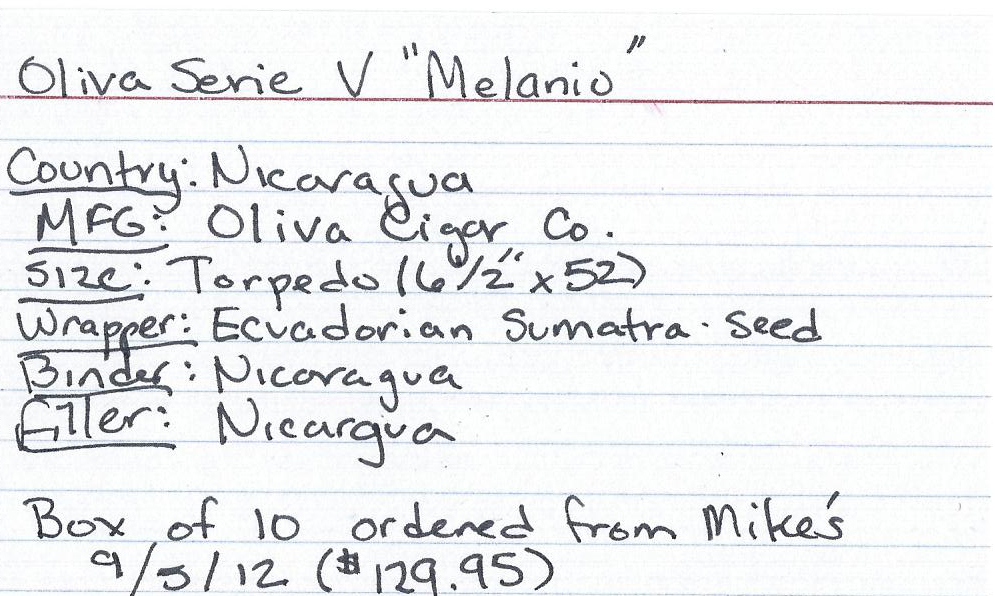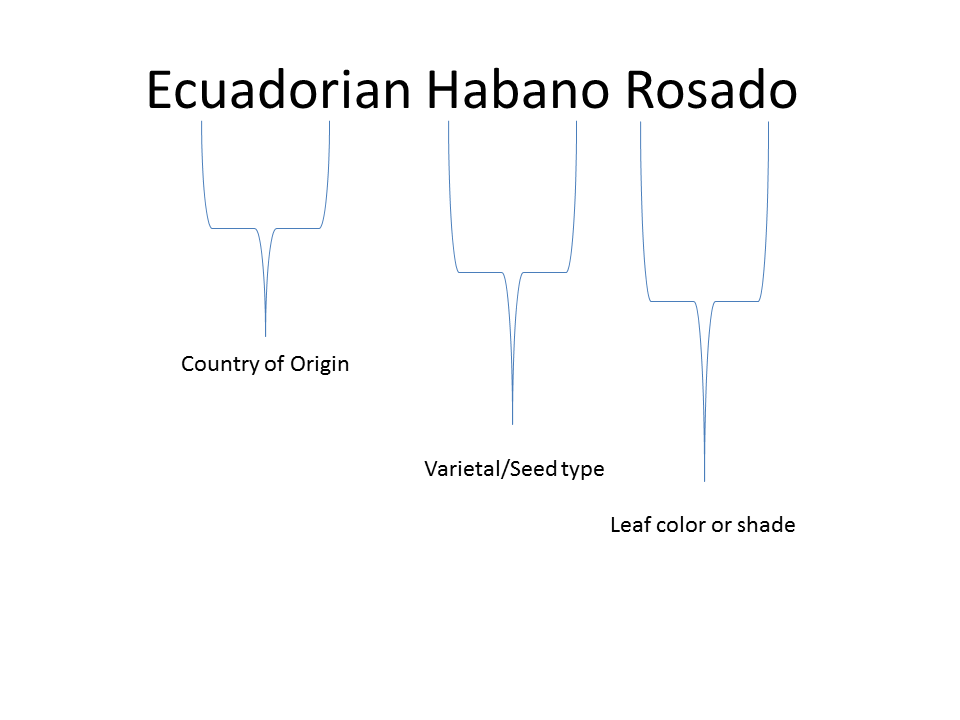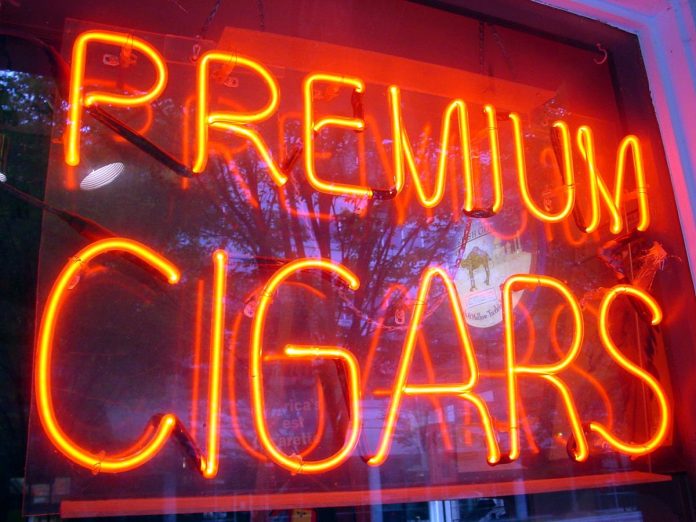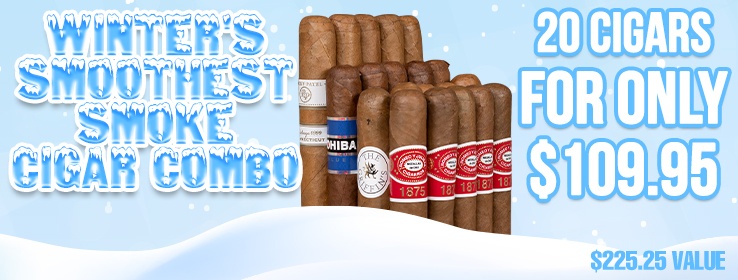“Learning the Language of the Leaf.”
(note: If you have not read Part One of the series, please click here to read it.)
As I began laying out my notes for the second installment of The Frugal Aficionado, fully intending to discuss cigar wrapper leaves, it occurred to me that there was one topic that warranted review before we can properly discuss the different tobaccos contained in a premium cigar.
Before we discuss such things as wrappers, binders, and filler blends it is very important that we “Learn the Language of the Leaf.”
Flipping through the pages of any cigar magazine, Mike’s Cigars catalog or website one finds a virtually unending array of wrapper, binder, and filler tobaccos used in the creation of premium cigars. Manufacturers offer names, some easy to understand, some not so easy, some which are outright confusing, to describe the leaves selected for their secret blends.
What is the budding aficionado to do?
“Read” the leaf!
Fortunately, the way in which premium cigar tobaccos are named follows something of a “rule.” Cigar tobaccos tend to follow an “A+B+C” formula, which once understood will serve as a guide for the aficionado assessing a premium cigar to ascertain its characteristics. In this article, I will explain how premium cigar tobaccos get their names, what the names mean to the cigar, and how to use your new found knowledge to locate cigars likely to fit your individual tastes.
In Part One of this series, we learned how to take notes about our cigars which contains the basic information about each cigar brand we sample. We learned that at a minimum, we should know the country of origin of each leaf; wrapper, binder and filler. In addition to knowing where each leaf was grown, there is often much more information available. Here are some of the finer details that often accompany the country of origin of each leaf. Below is an example of some notes from Part One, the cigar; the Oliva Serie V “Melanio.”

3×5 cigar data card for the Oliva Serie V Melanio torpedo
As you can see, I’ve noted the wrapper is an “Ecuadorian Sumatra-seed,” the binder “Nicaraguan,” and the filler blend, also from Nicaragua. Often, manufacturers will include more information about their blend including…
- Wrappers
- Country of Origin
- Varietal
- Growing method
- Binders
- Country of Origin
- Varietal
- Growing method
- Single or Double binder
- Fillers
- Country of Origin
- Varietal
- Priming
A tobacco varietal, or type of seed, is often referred to as a “genotype,” from the genes carried in the tobacco seed. The combination of genotype plus external factors like country of origin and production methods together is called the “phenotype.”
Learning to “read” tobacco leaf information is easiest if you think about it like diagraming a sentence. (Remember this from grade school?) Most every manufacturer shares some information about the three basic components of their product: wrapper, binder, and filler blend.
Below I’ve listed some examples of wrapper varietals from several premium cigars featured in the most recent issue of Cigar Journal. I’ve used a single underline to highlight the country of origin, bold to indicate the tobacco varietal, and a bold underlined to highlight any additional “clues” pertaining to character the leave. Each cigar brand name is linked to more information about the brand for reference.
Rocky Patel Vintage 1990: Honduran Broadleaf
CAO Concert: Ecuadorian Habano Rosado
Oliva Serie V “Melanio”: Ecuadorian Sumatra-seed
Romeo Y Julieta Reserva Real: Ecuadorian Connecticut-seed
Alec Bradley American Classic Blend: Honduran Connecticut-seed
Torano Vault: Nicaraguan Shade-grown
As you can see from the examples above, there is a huge variety of black cigar tobacco grown throughout the world. Most cigars blend leaves from several growing regions, different primings, and different types to develop the taste and aroma profile desired.
Now, let’s take a look at a few of these leaves and “diagram” them…
Example 1: Nicaraguan Shade-grown

Our first example is the most basic. The Torano Vault utilizes a shade-grown leaf from Nicaragua. We’re not told the varietal of tobacco, although one can imply some “Habano” seed variety. Knowing the wrapper leaves were grown under shade, as opposed to “sun-grown,” hints that they will be a milder, smoother leaf.
Example 2: Mexican San Andres maduro

The Siglo Limited Reserve Maduro from Altadis, USA features a San Andres seed, maduro wrapper leaf grown in Mexico. The San Andres seed is one of the few “pure” black tobacco varietals and produces a thick and hearty leaf. Knowing the wrapper is from Mexico gives us an idea about the character of the leaf, its flavors and aromas. The fact that the wrapper is a maduro we can also imply that there will be a slight sweetness to the wrapper.
Example 3: Ecuadorian Habano Rosado

Here is an example of a manufacturer utilizing a wrapper of a specific color, Rosado, in the manufacture of a blend. For the C.A.O. Concert line, leaves of a particular color (or “wrapper shade”) were separated as part of the wrapper sorting process and set aside. When preparing the blend for the C.A.O. Concert, the C.A.O. blend team purchased these leaves specifically for their color and the character the leaves impart to the blend. The leaves are from the cloud covered fields of Ecuador, so they will be a finer leaf, thinner than a sun grown wrapper. Finally, they are derived from a “Habano” seed varietal which gives us an idea of their flavor and aromas.
Now we’ve seen how the different cigar tobaccos names are derived, let’s look at how this can help us. If you’re reading this, and made it this far, it’s likely that you are more than a one or two-a-year cigar smoker. Based on this assumption, I feel it’s likely that you’ve sampled at least five or ten different brands of premium cigars in your career. It’s also likely that you have one or two that you really prefer.
What we’re going to do is a little homework assignment. Hey, this is “cigar school” after all… Did you really think you’d get off that easy?
Here it is:
- If you haven’t already read Part One of this series, please click here to read it. It will help in your understanding of this lesson.
- The written assignment… Take out a sheet of paper, 3×5 cards, or whatever you’ve chosen to keep your cigar notes on. (You read Part One and picked a method, right?) Go online and look up your favorite two or three cigar brands. (Try MikesCigars.com) Once you find them, using your chosen note keeping method, record the wrapper, binder, and filler leaf information. Be sure to note what country your cigars were made in and if possible, by what company. Document as much information about the tobaccos found in your cigars as possible.
- Cigar thought: Look at the brands you chose for the written exercise. Think about each cigar individually. What draws you to this particular brand? Are there particular flavors or aromas that you find pleasing in the blend? Is it mild, medium, or full bodied? How about the others? Are there similarities and differences in the cigars’ characters? Are there similarities in the leaves used in each blend?
- Keep your notes handy, we’ll be using them in Part Three of The Frugal Cigar Aficionado soon!
Being able to identify those features one prefers in a cigar, be it flavors, certain spices or aromatic qualities, full-bodied boldness, or mellow, refined mildness, which one prefers in a cigar is the first step in becoming an educated cigar aficionado.
By learning the particulars that make up your individual tastes will be invaluable as you look to expand your repertoire of cigars. As you begin to invest in cigar accessories like humidors, you will save countless dollars by stocking up with cigars that you know you like rather than some you simply smoke.
Cigars are a unique treat to be slowly savored and enjoyed. Not many things in life can be appreciated at the level of a fine, handmade premium cigar and the deeper your understanding, the deeper your appreciation.
Good smokes!
Marty Klausmeier, Contributor
To continue reading Part Three of the series click here






[…] decision when selecting premium, handmade cigars and introduced the idea of note keeping. In Part Two, we expanded on this by learning how to “read” cigar leaf information by identifying country of […]
[…] Part Two: “Learning the Language of the Leaf.” […]